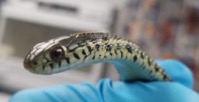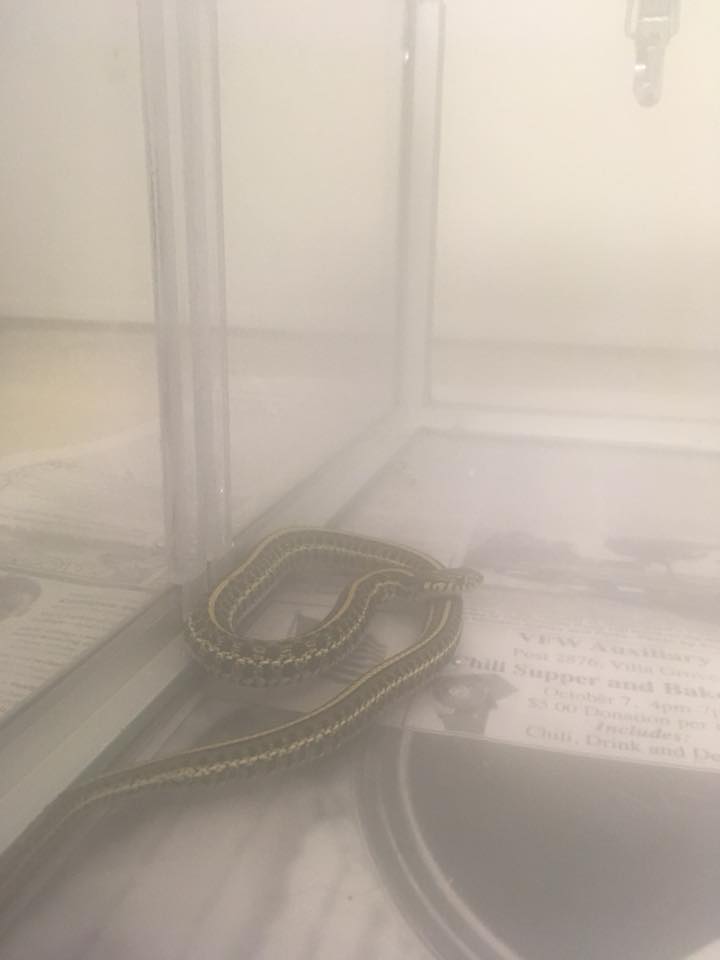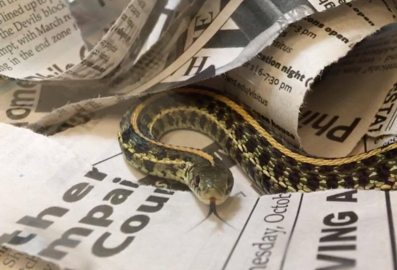Student Blog by Yvonne Wong, VM 21
In November, a juvenile Common Garter Snake presented to the Wildlife Medical Clinic. The little snake, just 30 grams or around 1 ounce, was found in a basement! It is not uncommon for reptiles to find shelter in residential homes during the winter months, but this choice is not always supported by the human inhabitants.

Upon intake, multiple small skin lesions (abnormalities) were found along the snake’s body. Otherwise, the patient appeared to be healthy.
Based on the physical exam findings, clinic members were immediately concerned about one particular disease – Snake Fungal disease (SFD), an infection caused by the fungus Ophidiomyces ophidiiocola.
This relatively newly-discovered fungal pathogen (first seen in 2006) is highly contagious, and potentially fatal, to numerous snake species (including garter snakes).
With this concern in mind, the Wildlife Medical Clinic consulted with one of the leading experts on this disease – our neighbors at the University of Illinois Wildlife Epidemiology Lab (WEL). Skin samples were taken using a simple swab technique and submitted for PCR testing. Sure enough, the results came back positive for Ophidiomyces infection.

Chamber receiving treatment
With the confirmation of SFD, the patient began a long course of antifungal therapy. Medicating reptiles can often pose a challenge due to potential danger to the handler (not the case with this small, non-venomous species) and stress or stubbornness of the patient. Luckily, the Wildlife Epidemiology Lab developed a highly efficacious method to treat snakes with Ophidiomyces using nebulization therapy. This patient underwent daily 30-minute nebulization treatments for the first month of care. A recheck skin swab was then tested to see if therapy was working. Thankfully, this test showed that the snake was now negative for the disease.
Three negative skin swabs are necessary to deem a snake free from fungal disease. This patient has already almost doubled in size while in clinic, so hopefully he/she will continue to grow and remain disease free through the next rechecks. As reptiles cannot be released during the winter time in temperate climates, this patient will be at the Wildlife Medical Clinic until the weather warms up!

If you would like to learn more about Snake Fungal Disease, please visit the WEL’s website: https://vetmed.illinois.edu/wel/.

